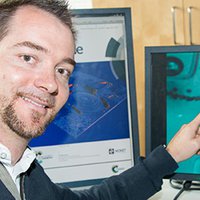Tak-Sing Wong has invented one of today’s most intriguing and potentially useful new materials. Called SLIPS, for “slippery liquid–infused porous surface,” it repels any type of liquid, from oil to water to blood, and prevents organisms like bacteria and barnacles from sticking.
The range of possible applications for the new material is wide: it could be used to coat medical devices such as catheters to decrease the potential for bacterial contamination or cover the hull of a ship to prevent barnacles from adhering to the surface.
Working at the Wyss Institute for Biologically Inspired Engineering at Harvard University, Wong modeled the SLIPS material after the carnivorous pitcher plants Nepenthes, which produce a surface that can upend even the oily feet of an ant and send the bug hydroplaning into the stomach of the plant. He assembled micro- and nanoscale structures and filled the empty spaces within the structures with a lubricant that repels both liquids and solids, including ice and bacterial biofilm.
Now an assistant professor of mechanical engineering at Pennsylvania State University, Wong continues to invent novel materials based on nature’s inspiration. He hopes to develop wearable devices with camouflage capabilities or gadgets that use a gecko’s ability to adhere to walls. “Like Spider-Man, we could walk on walls,” he says, “or [use] camouflage like a chameleon that can change color on demand.”
—Alexandra Morris
Watch this Innovator at EmTech 2014
Meet the Innovators Under 35




